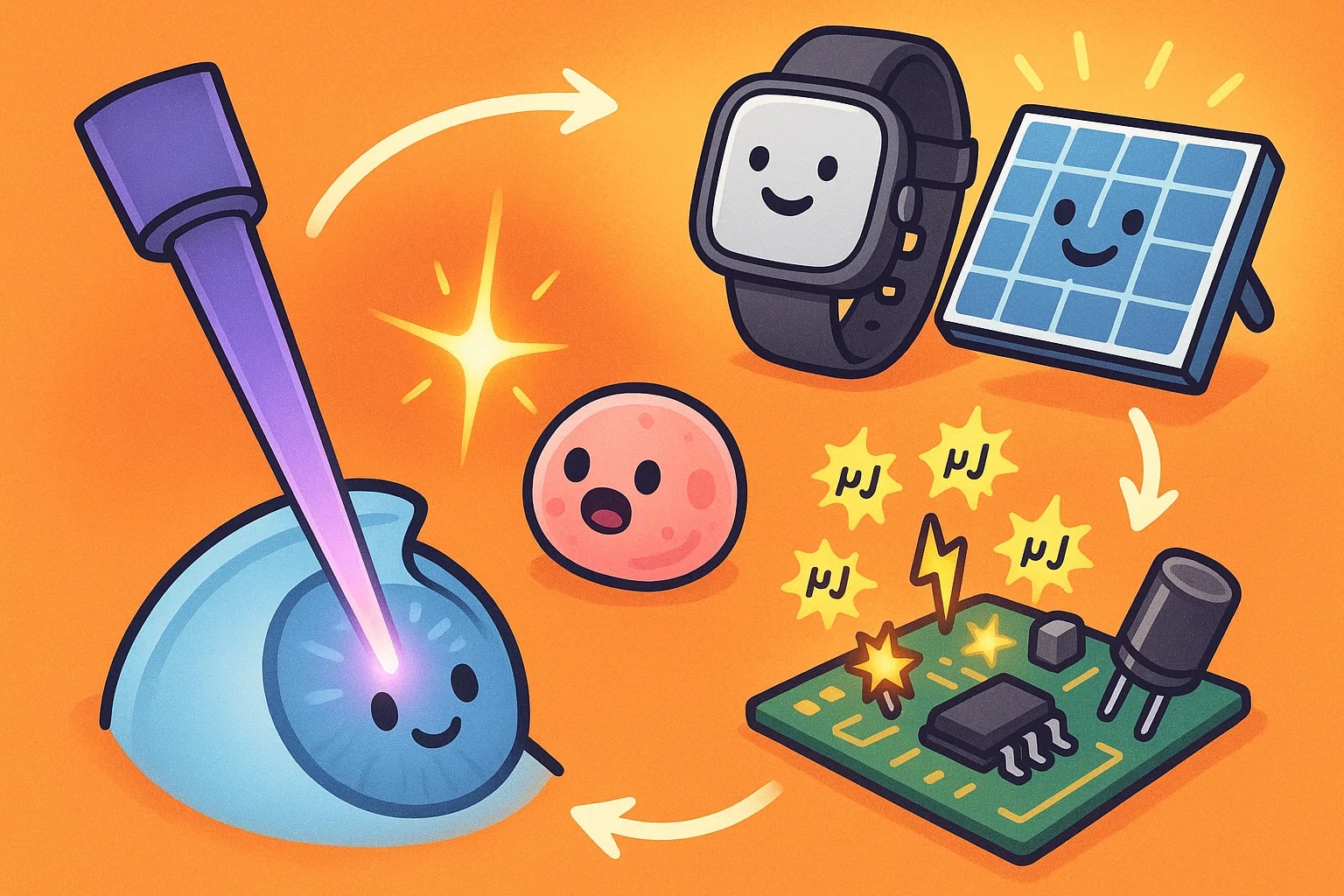Microjoule to Joule – How to convert μJ to J
Energy can span enormous scales — from fractions of a joule in microelectronics to billions of joules in industrial systems. When working at the microscopic level, scientists use microjoules, while joules keep results readable at everyday or industrial scales. Converting between them bridges those worlds.

What a microjoule measures
A microjoule (μJ) is one-millionth of a joule:
1 μJ = 1/1 000 000 J, or 1 J = 1 000 000 μJ.
This unit is common in laser research, semiconductor testing, and ultra-sensitive electronics, where even tiny energy transfers can have measurable effects. For example, laser pulses for medical imaging often carry less than 10 μJ each, minimizing tissue impact.
Why the joule is still the anchor
The joule (J) is the SI base unit for energy. One joule is the work done when a force of 1 N moves something 1 m, or equivalently 1 W·s. Joules cover a vast range: powering an LED, heating water, or describing the energy stored in food (1 kJ = 1 000 J).
When data shifts from micro-scale experiments to broader energy reports, results are usually converted into joules to keep figures standardized.
Converting μJ to J
The relationship is a simple decimal scaling:
1 J = 1 000 000 μJ
Energy (J) = Energy (μJ) ÷ 1 000 000
Example calculation:
A pulsed laser outputs 250 000 μJ per shot. Converting to joules:
250 000 μJ ÷ 1 000 000 = 0.25 J.
Each pulse carries 0.25 J of energy.
For quick calculations, use Conversion tools or go directly to the Energy Converter.
Did you know?
-
Medical eye surgery lasers often deliver pulses below 100 μJ, precise enough to remove or cut tissue without burning surrounding cells.
-
The human retina can detect flashes of light as faint as 1 μJ, which is why this unit is important in visual perception research.
-
Microjoule tracking is essential in ultra-low-power sensors, where each wireless data transmission might consume just 300 μJ.
-
High-speed fiber optic networks measure optical pulse energy in microjoules to avoid errors in power balancing.
-
A typical solar calculator collects a few thousand microjoules per second under bright light, enough to keep its circuits powered.
From Lasers to Living Cells: Where μJ and J Intersect
In optical medicine, lasers measured in microjoules can reshape corneas or target single cells without harming neighboring tissue — a level of control impossible if results were only tracked in whole joules.
Meanwhile, in electronics research, engineers measure microjoules to study how much energy each component uses. When this data is aggregated for devices or systems, it’s converted back into joules so energy budgets remain consistent across industries.
The conversion isn’t just math; it’s what allows discoveries at the microscopic scale to translate into practical, large-scale applications, from wearable tech to renewable energy systems.

Scaling up energy the smart way
Energy doesn’t stay at one scale — it flows from the tiniest laser pulse to the heat powering entire grids. Converting microjoules to joules ensures that small-scale research connects seamlessly with broader energy reporting.
For precise, hassle-free conversions, Jetcalculator’s Conversion tools and Energy Converter can handle the calculations instantly.
From medical breakthroughs to next-generation electronics, knowing how to switch between microjoules and joules keeps energy data meaningful, no matter the scale.

